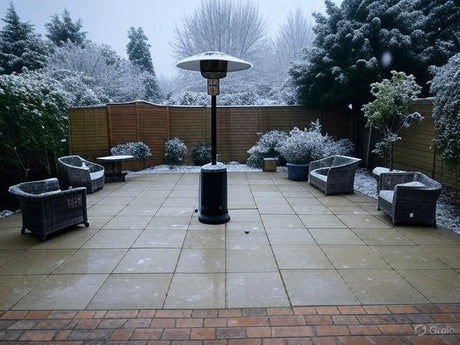This post will give a brief guide on how to paint your garage floor.
If your floor is stained with oil, grease, and rust, you can easily give it new lease of life with a coat of concrete floor paint.
Concrete floor paints are available in both solvent-based (Polyurethane) and water-based (Alkyd and Acrylic) forms, both paint types are formulated to resist stains and resist wear, the polyurethane floor paints tend to provide much better wear restiance and are usually used in industrial environments such as factories, large industrial units and distribution centers, the acrylic and alkyd variants are less durable, however the Alkyd type is much more durable compared to acrylic and can be used in industrial environments too. Acrylic and alkyd floor paints dry to a satin finish, while polyurethanes tend to be gloss finish.
Water-based concrete floor pains are relatively inexpensive and easy to apply and are the common choice for most people who plan to apply the paint to domestic or low traffic areas. Though garage floor paint is available in a variety of colours, you might want to choose a light colour if you use the garage as a workshop. A light gray, for example, will reflect more light than a darker colour.
As with indoor water-based paints, concrete floor paint is applied with ordinary paintbrushes and rollers; as oppose to two-part epoxy floor paints, which require more expensive applications techniques. Paints that are made specifically for use on concrete floors should provide adequate slip resistance without additional additives. Water-based paints are more popular for domestic use as they can clean up with soap and water; whereas solvent-based paints require solvents (White Spirits) for clean up.
Preparation Is Key
Painting a concrete garage floor may require more detailed preparation than most indoor painting, as it is very important to clean the concrete thoroughly and repair any damage before you paint. Oil and grease stains will interfere with the paint's ability to bond with the concrete, and may bleed through the finish.
Whatever type of paint you choose, read the instructions carefully. Pay particular attention to surface preparation and temperature suggestions, our floor paints have a minimum application temperature of 5°C. Most garage floor paint jobs that fail do so because the surface was incorrectly prepared or the surface temperature was too low to allow for a good bond. High humidity can also negatively affect the durability of the paint job.
Cleaning the Garage Floor
Clean the garage floor using a broom and vacuum to thoroughly clean debris from the floor. Remove grease with a degreaser and stiff brush. Rinse the degreaser and allow the floor to dry. Heavy stains may require a pressure washer.
Etch or Acid Wash the Garage Floor.
Garage floor paint adheres best if the surface of the concrete has a slightly roughened texture—like that of fine sandpaper. Garage floors that have been troweled to a smooth surface will need to be roughened to create a suitable texture for painting. This can be done with an etching product or muriatic acid (always follow the manufacturer’s instructions carefully). You may need to etch or wash the surface twice to achieve the proper texture. Rinse the concrete thoroughly to remove any traces of chemicals, and allow it to dry completely before moving on to painting.
Alternatively, it is also possible to etch a smooth concrete surface by using a power grinder or sander rather than using chemicals. This is also a necessary step if you are painting over old paint. Make sure to vacuum and damp-mop the sanded surface thoroughly to remove dust before painting it.
Applying Garage Floor Paint
Before Thinning applying the first coat, work out whether you need to apply a primer/sealer first.
You will normally need to apply this if the floor hasn't been painted before or if the floor has bare concrete exposed.
Floor primers and sealers are used to ensure the paint fully adheres to the concrete, minimising any chance of peeling or flaking, which occured when the paint doesn't fully bond with the concrete. The primer/sealer soaks deeper into the concrete, acting as an anchor for the floor paint to adhere to.
After you've applied 1 coat of the floor primer/sealer and you've allowed it to fully dry, you can move on to the floor paint.
It is best to use a paintbrush as brushing works better than a roller for working the paint into the surface, however, if it's a large area, medium pile rollers will work great too. Thoroughly brush on a complete but thin coat of paint, then allow it to dry thoroughly.
The second coat of paint can be applied full strength, we still recommend applying this in a roller out coat to ensure the paint dries hard and quick, apply using either a brush or a roller. In some instances, a third coat might be necessary, especially if the concrete is heavily textured. Clean up tools with soap and water.
Water-based floor paint dries to the touch in a matter of hours, but it is best to let it dry at least a full day before walking on it.












1 comment
Excellent products. Two coats of sealer and two coats of paint purchased from this company. Suggest you spend the extra for the large paint tray and roller. Pictures are available for before and after.